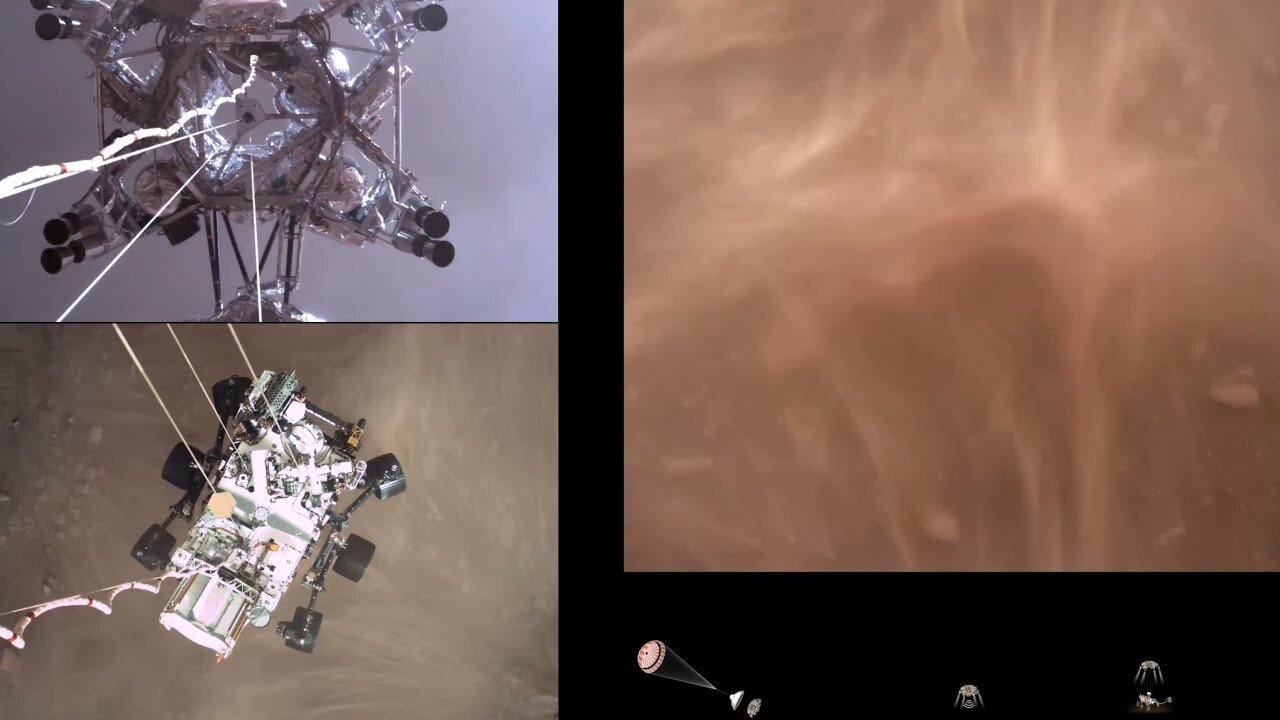Premium Only Content

Perseverance Rovers Descent and Touchdown on Mars Official NASA Video
The Perseverance rover's descent and touchdown on Mars was a complex and thrilling process that took place on February 18, 2021. Here's an overview of the key steps involved in the descent and landing of the Perseverance rover:
1. Entry, Descent, and Landing (EDL): The process began with the spacecraft's entry into the Martian atmosphere, which is often referred to as the "seven minutes of terror." At this stage, Perseverance was traveling at a high speed and needed to slow down significantly to land safely. The EDL phase included several critical steps:
a. Atmospheric Entry: The spacecraft entered the Martian atmosphere at a speed of about 12,100 miles per hour (19,500 kilometers per hour).
b. Heat Shield: The spacecraft's heat shield protected it from the intense heat generated during atmospheric entry. Friction with the Martian atmosphere slowed the spacecraft down.
c. Parachute Deployment: At a specific altitude and velocity, the spacecraft deployed its supersonic parachute to slow down further. This was a crucial step in reducing its speed.
d. Terrain-Relative Navigation: Perseverance used advanced onboard navigation systems to identify and target a safe landing site during its descent. This allowed for a precision landing.
e. Powered Descent: The spacecraft separated from its backshell and parachute, and a powered descent system was used to control its final approach to the Martian surface.
f. Sky Crane Maneuver: The rover was attached to a sky crane, which used retrorockets to slow its descent. This was a novel and innovative approach to safely lower the rover to the surface.
2. Touchdown: Perseverance was gently lowered to the Martian surface by the sky crane. The rover's wheels made contact with the surface, and the descent stage, which was no longer needed, flew a safe distance away and crash-landed.
3. Post-Landing Activities: After a successful touchdown, Perseverance initiated its post-landing activities. These included checking its systems, deploying its mast, and conducting various instrument checks. It also began sending images and data back to Earth.
The entire descent and landing process was executed autonomously because of the time delay in communicating with Earth. This sequence of events was meticulously planned and relied on a combination of advanced technologies, including autonomous navigation, precision landing techniques, and the innovative sky crane maneuver.
The Perseverance rover landed in Jezero Crater, a location chosen for its potential to have once hosted a lake and preserved ancient microbial life. Since its landing, Perseverance has been exploring the Martian surface, conducting scientific experiments, and preparing for its primary mission, which involves searching for signs of past life and collecting rock and soil samples for future return to Earth.
-
 21:35
21:35
DeVory Darkins
3 days ago $16.79 earnedMitch McConnell TORCHED as Secretary of HHS is sworn in
80.4K172 -
 1:20:04
1:20:04
Tim Pool
4 days agoGame of Money
144K11 -
 4:48
4:48
Cooking with Gruel
15 hours agoThe Perfect Bacon
6.39K2 -
 11:49
11:49
Reforge Gaming
2 hours agoXbox - Next Game on PlayStation?
4.13K3 -
 27:46
27:46
ArturRehi
1 day agoSurprise Counter-Attack in Kursk Advanced 3 Miles | French Jets Arrive | Ukraine Update
3.95K3 -
 11:51
11:51
Alabama Arsenal
14 hours ago $1.23 earnedThe Silent Sledgehammer | GQ Armory 8.6BLK Paladin
18.6K1 -
 2:21:11
2:21:11
Nerdrotic
17 hours ago $37.04 earnedDown the Rabbit Hole with Kurt Metzger | Forbidden Frontier #090
168K35 -
 2:41:13
2:41:13
vivafrei
22 hours agoEp. 251: Bogus Social Security Payments? DOGE Lawsduit W's! Maddow Defamation! & MORE! Viva & Barnes
281K306 -
 1:19:23
1:19:23
Josh Pate's College Football Show
15 hours ago $5.35 earnedBig Ten Program Rankings | What Is College Football? | Clemson Rage| Stadiums I Haven’t Experienced
81.9K1 -
 13:22:09
13:22:09
Vigilant News Network
21 hours agoBombshell Study Reveals Where the COVID Vaccine Deaths Are Hiding | Media Blackout
130K69